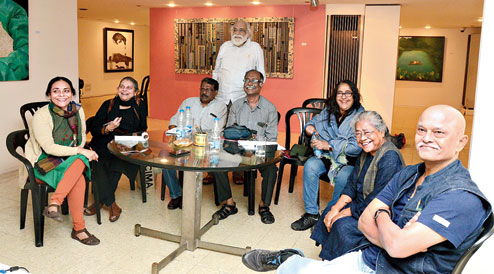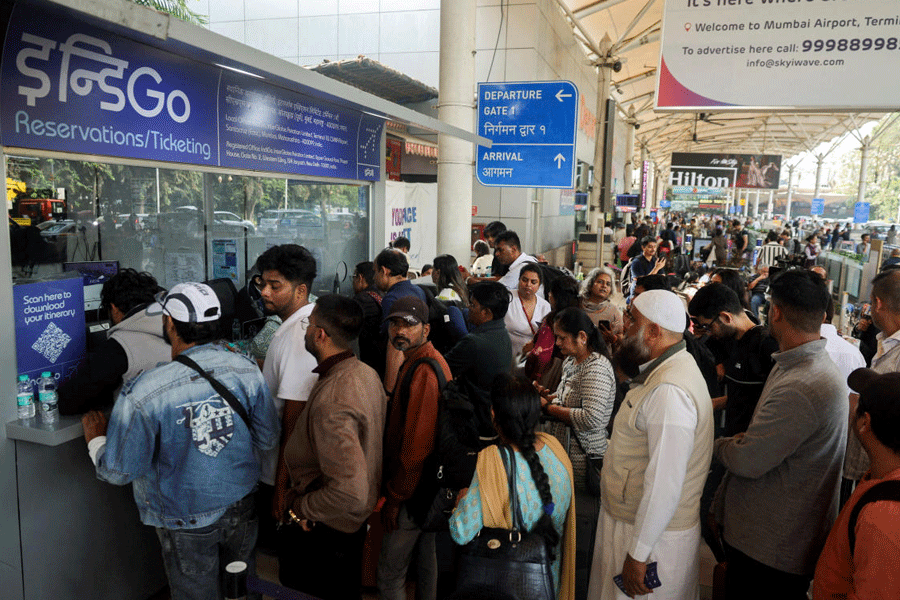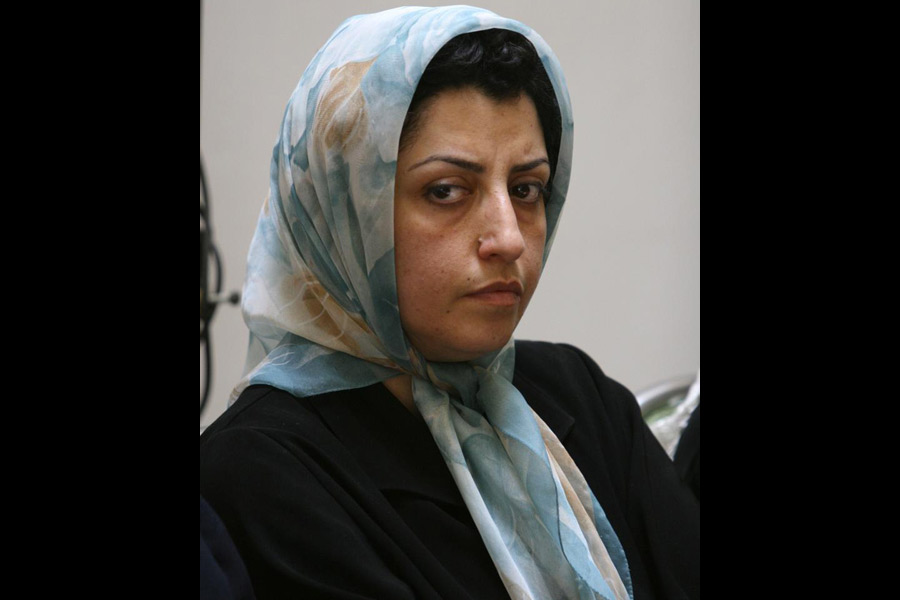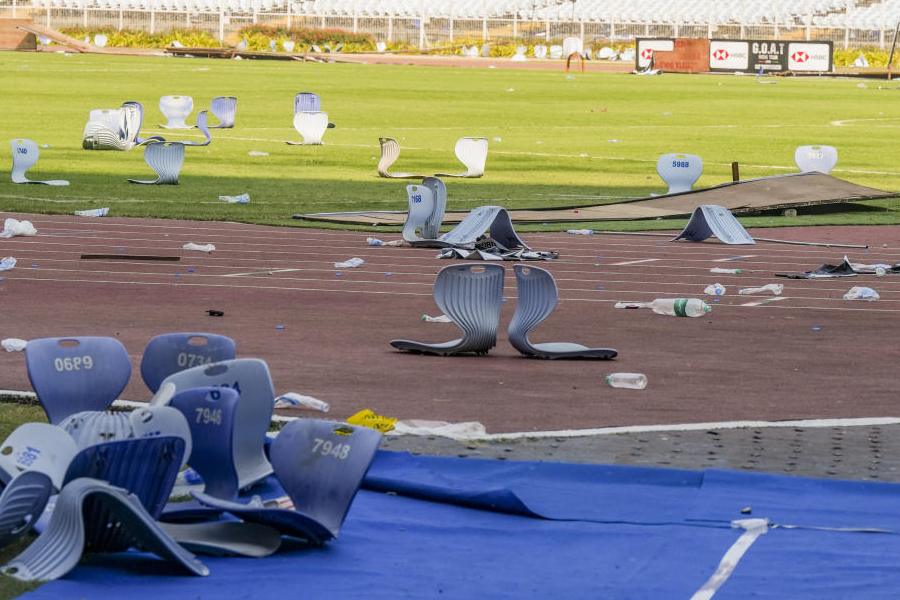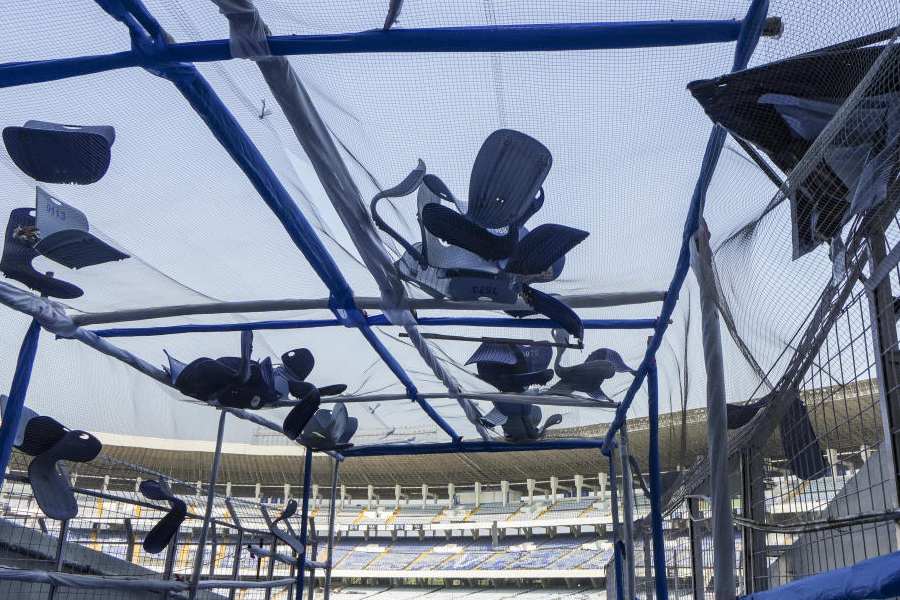Eight artists and a writer from across the country spent two days at five venues examining 200 short-listed entries to pick 14 winners for CIMA Awards 2017, to be held on February 4 at The Oberoi Grand. All the 200 exhibits will be displayed at CIMA Gallery, Studio 21, Academy of Fine Arts, 3 Dover Park and Gem Cinema, February 5 onwards, as part of the month-long CIMA Awards: The Kolkata Art Festival 2017. t2 caught up with the jury just as they finished debating about the winners.

Pictures by Arnab Mondal
THE CIMA AWARDS
N.N. Rimzon: It is an art festival. It is a celebration of visual art and images. And Calcutta has a history of it. Most of the time it is traditional art but here there is contemporary art and that will be a different experience.
R.M. Palaniappan: I think it is our duty to participate in such events wherever they are happening. It is a chance to experience a different kind of thing.
Prabhakar Kolte: It is a kind of encouragement and our thought was that such awards and such exhibitions should give direction to the younger generation. That is why we are here.
Sreyasi Chatterjee: The range of scale, from small to big ones, and that I think is a characteristic of this exhibit. It is making art accessible to the people. The entire jury was very impressed with the Gem Cinema space and how things are displayed there. I think it will be a real feast for the eyes of Calcuttans. From very typical galleries to traditional colonial buildings to a regular space like Studio 21, which is a flat. And then from there the shift to Gem Cinema is surely a big change for the viewers. Where and how art is and can be displayed is also a learning from this show.


THE PARAMETERS OF JUDGING
Anju Chaudhuri: The aesthetics.
Palaniappan: Yes, the overall aesthetic feel.
Sreyasi: We went in with a free mind; we were not looking for anything specific.
THE ENTRIES THIS YEAR
Paramjit Singh: I won’t say that the artworks are of extraordinary quality but they are definitely diverse. I wanted to see more soul.
Arpita Singh: I think technically they are all great.
Sreyasi: It wasn’t that hard to make the decisions.
Anju: Well, of course, there are going to be disagreements when there are nine people judging…
Sreyasi: Also, in the jury we are painters, sculptors and print-makers, so of course we had different views.
Rimzon: Disagreements are a healthy thing you know…. We are dealing with contemporary art, so there will be a lot of experimentation. New kind of expressions will be there, so you need to give a new kind of direction for that. The new expressions, new ways of doing things, the scale of the work, how they are putting the particular space... these are all important priorities for selecting the works.
Palaniappan: Whatever we have selected is a message from the jury, about what direction it should be.
Rimzon: Things are changing with the times. And now immediacy has become important. They want to express something fast using material that is available to them. That is very natural I think.
Kolte: I personally feel that the present generation is becoming more linear in their thought process. Because most of the exhibits are based on linearity. There is no mass or there is no colour as such. It can make us worry or we can just wait and see whether it changes with time.
THE TRENDS THIS YEAR
Paramjit: I think installation has come up more than others. The sad part is paintings are very few.
Arpita: Especially oil. There is not a single oil. The graphics are good, and the etchings. Some drawings are good too.
Paramjit: This time we find installation and linear work like etching and drawing are more dominating. And if we don’t take installation as sculpture, then sculptures are a weaker section this year. The patience and the work involved in doing a work by hand, I don’t think people have time for that. The computer has entered and the digital work has completely destroyed the art of painting.
Arpita: The technicality that is coming into our life, that is expressing itself. Art reflects the time, so it is natural. If something has to pass away, then it will. The basic instinct of man is to put a mark on the surface. That is what is called painting. So I don’t think it will be eliminated forever. It will come back.

Rimzon: There is a sort of freshness to the works and there is a sort of departure from conventional paintings and conventional sculptures and drawings. The works rather explore the site-specific and space. These are some of the striking features of the entries.
Palaniappan: You know when someone has done a landscape and it is not a site for a landscape, there is a sort of metaphysical view.
Sreyasi: There is a variety of art that has been brought in. There are installations and video art and sculptures. There are on-the-walls and digital prints. And this time graphic prints are of very good quality. You know, many of the works, even though they did not receive any prize or not going to get any awards, are still of very good quality. Some are very intimate, very small. There is a great variety in terms of scale too.
THE CIMA AWARD WINNER

Harendra Kumar Kushwaha, West Bengal, displayed at CIMA Gallery
Sreyasi Chatterjee: We don’t know the artist. We have just seen the work.
Anju Chaudhuri: It was aesthetically pleasing.
Sreyasi: It has got the basic essential things of art practice. The basic grammar is all their but it is a new kind of approach and it is familiar to us because we find it all over Calcutta, it is what the beggars and homeless people use as shelter. It has a structure, it has lines, and it has balance because of the weights. It has great texture. All paintings have a weight and structure.
Kunal Basu: There is a curious vulnerability to it and reflects the essential beauty of life. You can perceive it in different ways — a feeble covering, a screen. It is not overly done and has lots of rough edges. Like the essence of life.
1ST RUNNER-UP
Sarat Roy
2ND RUNNER-UP
Mantu Das

JURY AWARD
Sanksha Brota Paul
Sahil Ravindra Naik
McLEOD RUSSEL SPECIAL MENTION AWARD
Swapnesh Harichandra Vaigankar
Harendranath Mahato
P.C. CHANDRA MERIT AWARD
Sanam C. Narayanan
Pratap Chandra Chakraborty
Akhil Mohan
Dasarath Das

DIRECTOR’S CHOICE
Abhishek Narayan Verma

